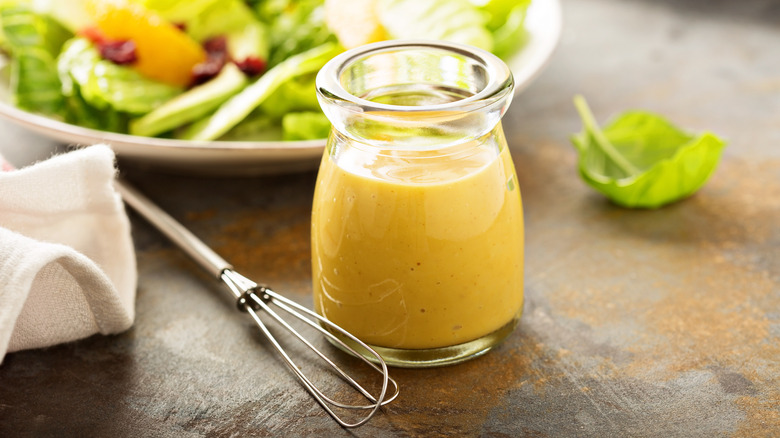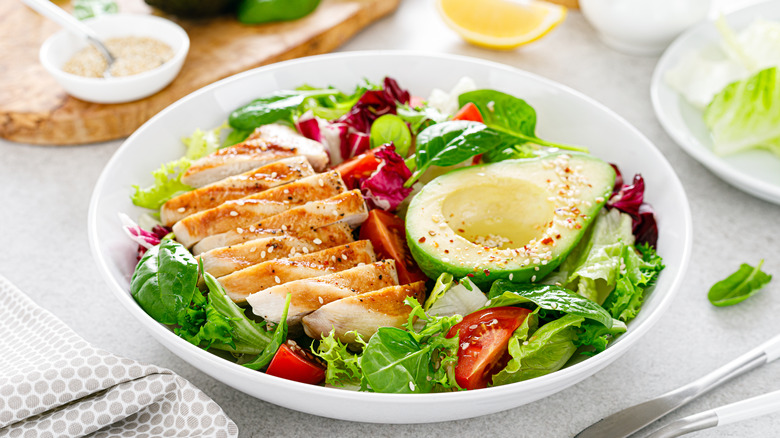How To Fix A Salad Dressing That's Overly Acidic
If there's one piece of dietary advice imparted to us by mom or dad, it was likely this: "Eat your vegetables." And doing so seems to be more fun as an adult than it was as a child, having long ago traded steamed Brussels sprouts and boiled green beans for more succulent dishes such as soy-rich vegetable stir frys and creamy fall vegetable soup.
Of course, if you don't feel like preheating your oven or lighting a burner when it's time to get those CDC-recommended 2 to 3 cups of veggies per day, salad, that old standby, nicely does the trick. And we're not talking about boring old iceberg here, but rather colorful, crunchy salads like corn with cherry tomatoes and feta, and the Iranian salad shirazi, packed with cucumbers, tomatoes, and red onion.
When making salads at home, it's fun and easy to go the extra mile by preparing their dressings from scratch instead of reaching into your fridge for a bottle. But if you're not used to making dressing — or if you unintentionally go a little overboard with the vinegar — you could end up with a mixture that's far too puckeringly acidic.
Balance the dressing out with a fatty ingredient
Making salad dressings at home isn't quite as quick and easy as grabbing a bottle of ranch, Italian, or blue cheese, but it's pretty darn approachable nonetheless — and worth the time and effort, according to Cooking Light. The outlet notes that even an amateur homemade dressing tends to taste way better than the bottled stuff, kicking up your Caesar, baby greens, or avocado salads a few flavor notches.
It's pretty hard to mess up homemade dressing, but one misstep that can occur is mixing up something that's just a touch too acidic. Maybe the vinegar poured out a little faster than you expected, or maybe the lemons you squeezed were bursting with even more juice than normal. As explained by Simply Recipes, the ratio you should strive for in a balanced dressing is 3:1 — that is, three parts oil to one part acid.
If you missed the mark and your homemade dressing turned out too puckery, remember that acidic ingredients are balanced out by rich, fatty ones, according to Cooking Light. So, you can always add some extra oil to the dressing to tone the acid down or try other fats such as mashed avocado, tahini paste, or even peanut butter. With these ingredients within reach, no one will know that the first draft of your dressing was an epic fail.

